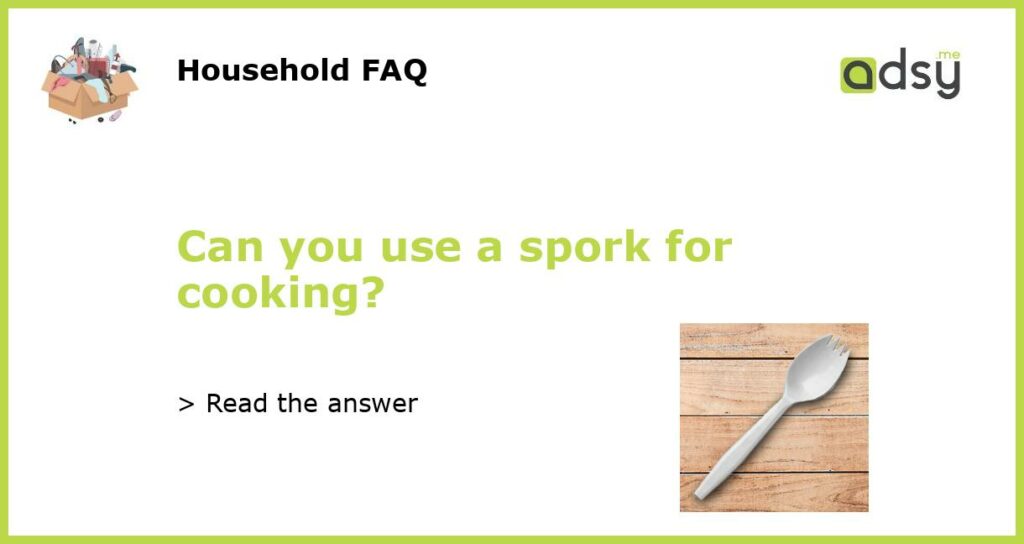What is a spork?
A spork is a utensil that combines the features of a spoon and a fork. It typically has a rounded spoon-like end with tines or prongs on the other end. Sporks are often made of plastic, but they can also be made of metal or wood.
Using a spork for cooking
While sporks are commonly used for eating and camping, they can also be used for cooking. Due to their design, sporks are versatile tools that can handle a variety of cooking tasks.
One of the main benefits of using a spork for cooking is its dual functionality. The spoon end can be used for stirring, scooping, and serving, while the fork end can be used for piercing and flipping food.
Additionally, sporks are lightweight and compact, making them convenient for outdoor cooking or when space is limited in a kitchen. They are easy to clean and can be conveniently stored.
What can you cook with a spork?
You can cook a variety of dishes using a spork. Here are some examples:
- Soups and stews: The spoon end of a spork is ideal for scooping and stirring soups and stews.
- Pasta: The fork end of a spork can be used to twirl and serve pasta. It can also be used to test the doneness of pasta by piercing it.
- Scrambled eggs: The fork end of a spork can be used to whisk eggs and the spoon end can be used to scoop and serve them.
- Salads: Sporks can be used to toss and serve salads, as well as pick up individual ingredients like cherry tomatoes or olives.
- Stir-fries: The spoon end of a spork can be used to stir-fry vegetables and the fork end can be used to pick up individual pieces of food.
Advantages and disadvantages of using a spork for cooking
Using a spork for cooking has both advantages and disadvantages.
Advantages:
- Versatility: The combination of a spoon and fork in one utensil makes the spork versatile for a variety of cooking tasks.
- Compactness: Sporks are lightweight and take up less space compared to carrying separate spoons and forks for cooking.
- Ease of use: Using a spork is intuitive and requires minimal skill or training.
Disadvantages:
- Limited functionality: While a spork can handle basic cooking tasks, it may not be suitable for more complex or specialized cooking techniques that require specific utensils.
- Metal transfer: Some sporks made of metal may transfer heat and affect the taste or texture of certain foods.
- Durability: Plastic sporks may not withstand high heat or heavy use, and can break or melt.
Alternatives to using a spork for cooking
If you prefer not to use a spork for cooking or need more specialized tools, there are several alternatives available:
- Cooking utensil set: Investing in a set of cooking utensils, including spoons, forks, spatulas, and tongs, can provide you with a wider range of options for different cooking tasks.
- Specialized utensils: Depending on the type of cooking you do, you may need specific utensils like a whisk, ladle, or chef’s knife for more precise and efficient cooking.
- Grilling tools: If you frequently cook on a grill, consider investing in grilling-specific tools like tongs, skewers, and spatulas that are designed for handling and flipping food on a grill.
- Camping cookware: If you enjoy outdoor cooking or camping, there are portable and compact cookware sets available that come with a variety of utensils suited for camping and outdoor cooking.
Ultimately, whether or not you can use a spork for cooking depends on your personal preference and the specific cooking tasks you need to perform. While a spork can handle basic cooking tasks, investing in a set of specialized utensils or cooking tools may provide you with more options and efficiency in the kitchen.






